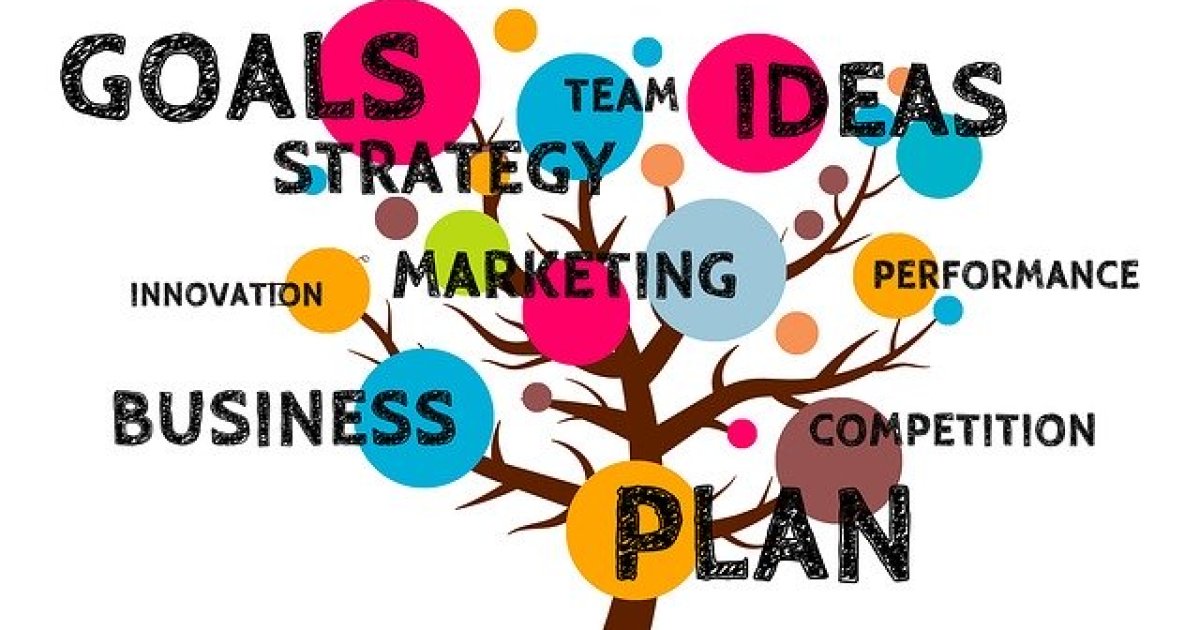Meeting Management: How to Run a Meeting

Meetings play a vital role in any organization's progress regardless of the services or products they offer to their potential customers. That said, the following sections elaborate on the significance of meeting management, and how to run those sessions effectively to make them more productive for both employees and the business itself.
Every human being learns from personal experiences that they gain while doing day-to-day tasks such as commuting through public transport, going to a social gathering, etc. Thus, each individual may have a different perspective on the things, and they react to the situations accordingly.
When all the employees with varied experiences sit together in a meeting to discuss any official matter, their perspectives help the chairperson see things from several points of view at a single point of time. It further helps the decision-maker(s) come up with an effective solution while concluding the meeting.
Therefore, it is imperative to run a well-managed meeting to make all the participants stick to the point without having any personal conflicts once the meet is over.
As discussed above, because effective meeting management gives more productive outputs, it is the leader's responsibility to have a clear idea of what they are doing. Therefore, the chairperson who has called upon a meeting must keep the following points (or phases of the meeting) in mind:
1. Before the Meeting
This involves proper preparation. As a chairperson, if you don't know what the meeting is all about, every participant would waste their as well as your time, and the outcome you seek would be extremely delayed. With that said, a couple of things you should focus on while planning for a meeting must include the following:
- Agenda
The first thing in this phase is setting a plan of the entire practice. What are you planning to discuss, is the issue/situation worth discussing in the first place, and what do you expect to achieve in the end?
- Involvement
Prepare a list of employees, managers, and other people directly or indirectly related to the topic you are planning to discuss. It would help you assess the number of participants that need to be invited to the meeting.
- Sitting Arrangement
Once you have finalized the list of invitees, you should then think of a correct sitting arrangement. Although there is no thumb rule as to where each attendee of a meeting should sit, psychologically, the participant whose chair is nearest to the boss is considered the senior most. Simply put, the proximity with the chairperson subconsciously defines the seniority level of the members, not only during the meeting but also outside.
- Time, Scheduling, and Punctuality
One of the most important parts of meeting management is to stick to the time. After planning all other things, you should set a particular date and time when you want to start the meeting. Also, it is equally imperative to set capping and ensure that the meeting is concluded within the defined timeframe. Another important factor is to remain punctual. If the meeting is scheduled to start at 1400 hours, it should begin at 1400 hours whatsoever. It would make the latecomers realize their inefficiency, and would help them improve.
2. In the Meeting
This phase is significant as this is the 'stage' where you will perform your 'act' and get the results. Therefore, a few important points that you should keep in mind during a meeting are:
- Equality
Regardless of the rank of the attendees, everyone should get an equal chance to speak their minds. There might be instances where the juniors get nervous and hesitate to open up fearing their ideas could be rejected. As a person-in-command, it is your responsibility to encourage such personnel to come up with their suggestions. The best way to do this is by greeting any inputs from their side with 'a smile.' You don't necessarily have to agree to what they say, but your small gesture of gratitude would help them be more comfortable and speak freely.
- Readdressing
This point works in conjunction with the previous one so that even if you didn't agree to a junior's suggestion, you should discuss their idea with other participants a couple of minutes later. You can try, "...so as our new member, Mr. Brown, suggested earlier…". It would make the recruit feel more connected with the organization.
- Conflicts of Ideas ONLY
It is normal to have different perspectives, and clashes between the ideas are natural as well. However, it should be you who must ensure that no two participants become personal enemies once the meeting is over. Therefore, make sure to stick to the agenda and take control of the conversation wherever needed.
- Take Control
Make sure that you have full control over the meeting and the topic of its discussion. An effective meeting management practice is when you take the conversation in your hand as soon as you realize that things may go wrong.
- Keep Things Documented
Ensure to jot down the important parts that you discuss along with the points you believe should be essential in coming to the final decision. It can be done quite effectively with any efficient meeting management software.
3. After the Meeting
The phrase 'After the Meeting' here means the 'final verdict' as in what decision is made, and what path is to be followed to address the issue. It is essential that the meeting should be concluded by the chairperson, i.e., you, in this case. The things that you must focus on while calling the meeting off may include:
- Decision
You must address all the participants and state the strategy that everyone agreed. Make sure to be loud and clear so each attendee could understand what has been decided.
- Roles and Responsibilities
While concluding, make sure to tell each person their role and their responsibilities to take care of as per the solution that has been decided in the meeting.
- Exchange Documents
If you are using a meeting management app, sharing the documents with the attendees wouldn't be a hassle whatsoever, and merely hitting the 'Send' or 'Share' button should suffice. However, to make things this simple, it is crucial to have robust software to manage your meetings.
As mentioned earlier, effective meeting management requires proper planning and precise documentation. In order to achieve this, there are several meeting management applications available in the market. Some of the best ones among them are listed below for your convenience:
1. Parabol
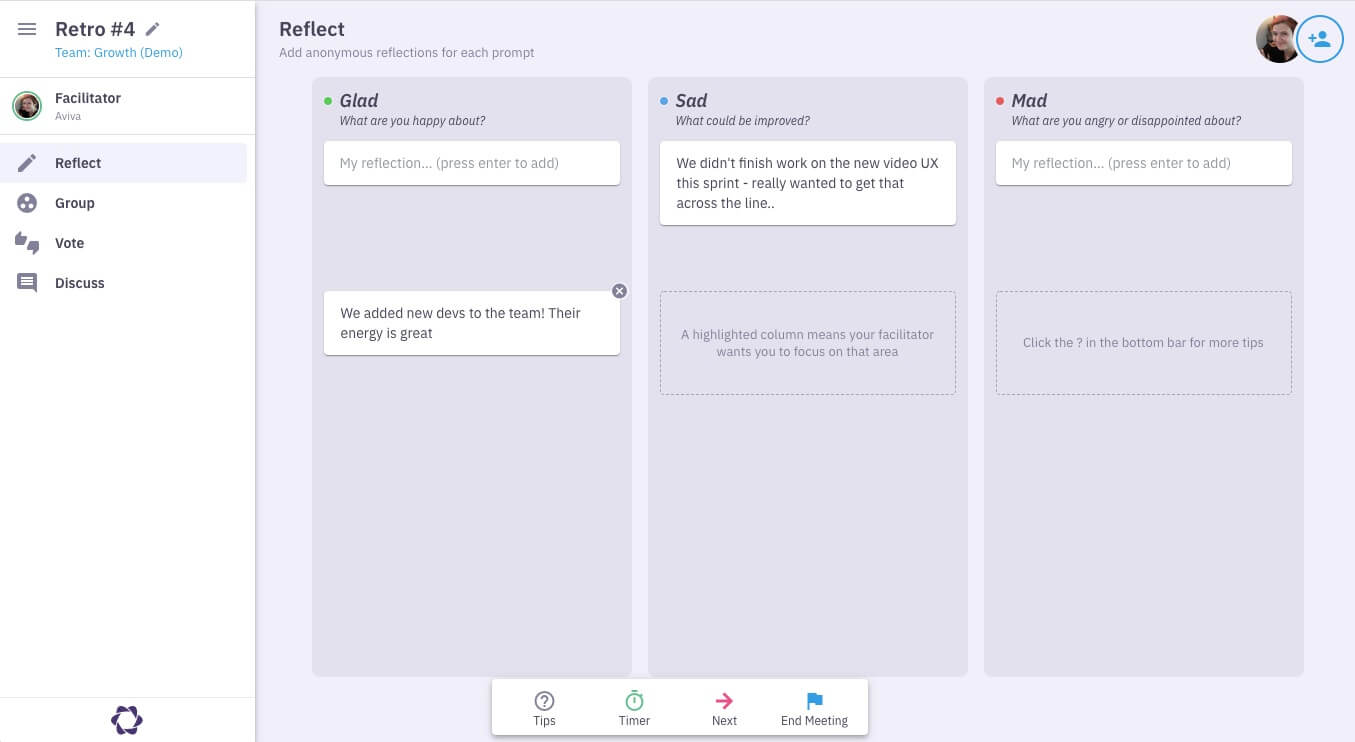
Parabol is an online open-source meeting management program that doesn't restrict its users with OS or devices. The solution can be accessed using any web browser on any computer and can be used seamlessly across the globe, thus enabling the leaders to conduct real-world and virtual meetings.
Features
- Offers Single Sign-On (SSO) for secure authentication and accessibility (available with Enterprise plan only).
- Allows drag-drop, voting, group task assignments, etc.
Price: Personal: Free | Pro: $6.00 per user per month | Enterprise: Requires custom quotation
Website: https://www.parabol.co/
2. Stratsys Meetings
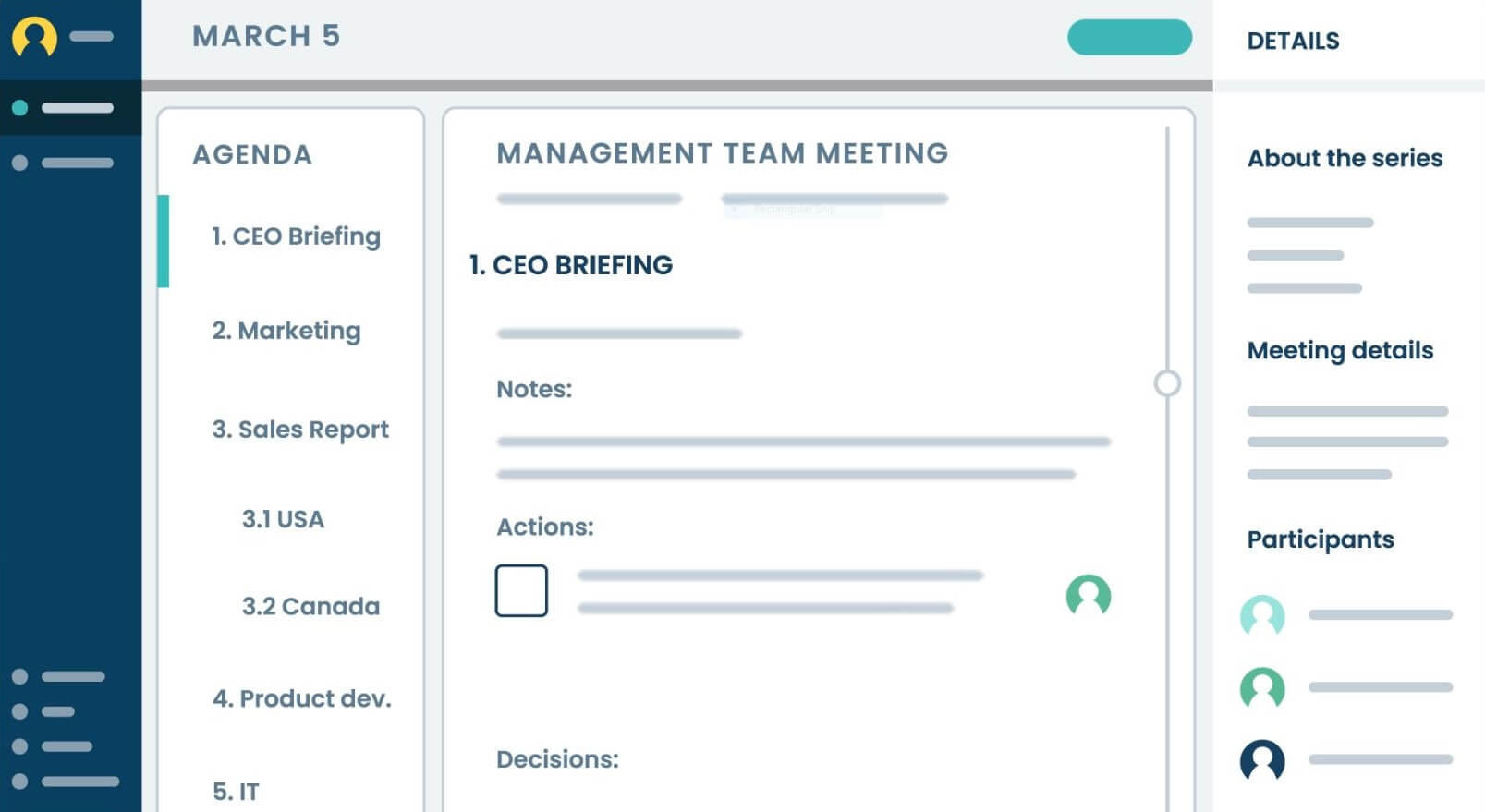
Stratsys Meetings is a cloud-based collaboration program that enables the leaders and the attendees to interact with each other on the go. The solution allows the sharing of meeting agendas, task assignments, etc. with merely a couple of clicks, making the entire meeting management process quick and extremely simple.
Features
- Has pre-meeting, meeting, and post-meeting tools like scheduling options, pre-configured templates, notes, file sharing, task delegation, emailing, etc. respectively.
- Allows you to set reminders and push notifications.
Price: Yearly Plan: $30.00 per 5 organizers per month + $10.00 per additional organizer | Monthly Plan: $36.00 per 5 organizers per month + $12.00 per additional organizer
Website: https://www.stratsys.com/products/stratsys-meetings
3. adam.ai

If you are looking for a solution that can effectively manage your meetings' entire life cycle, adam.ai is something that wouldn't disappoint you in any way. The app is not only for the managers or leaders but is also useful to the individuals who deal with their clients as freelancers.
Features
- Allows you to track the progress of your team.
- Enables you to set goals and assign responsibilities with the least intervention.
Price: Free: $0.00 for up to 5 users | Pro: $4.99 per user per month | Enterprise: Requires custom quotation
Website: https://adam.ai/product
4. Retrium
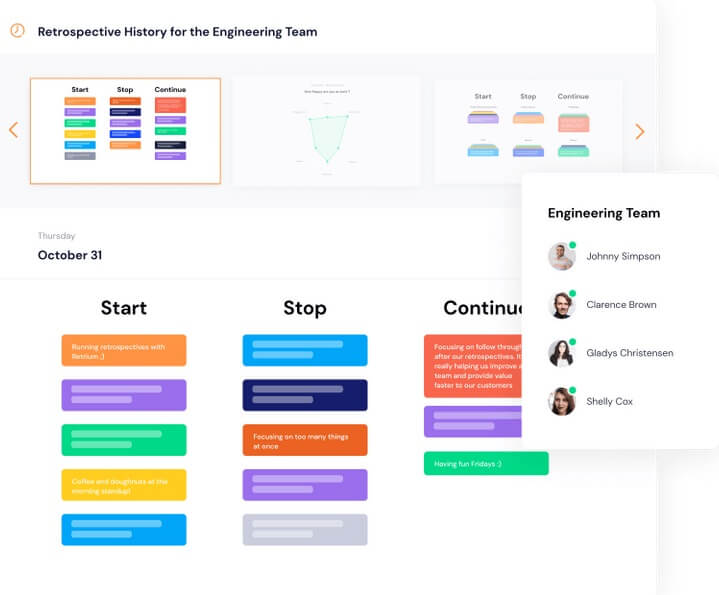
Retrium is a meeting management software best for those lengthy sessions that need clear and proper documentations. Simply put, the app makes the conversations between the attendees much faster and easier. Furthermore, with the built-in template libraries, the participants can experience versatility in the ambiance of the UI while attending a meeting.
Features
- Enables you to vote for the ideas, and mark the good ones as top rated.
- Lets your team have a private room and make only the required information public, such as anonymous feedbacks and/or comments.
Price: Team: $29.00 per team room per month | Enterprise: Requires custom quotation
Website: https://www.retrium.com/
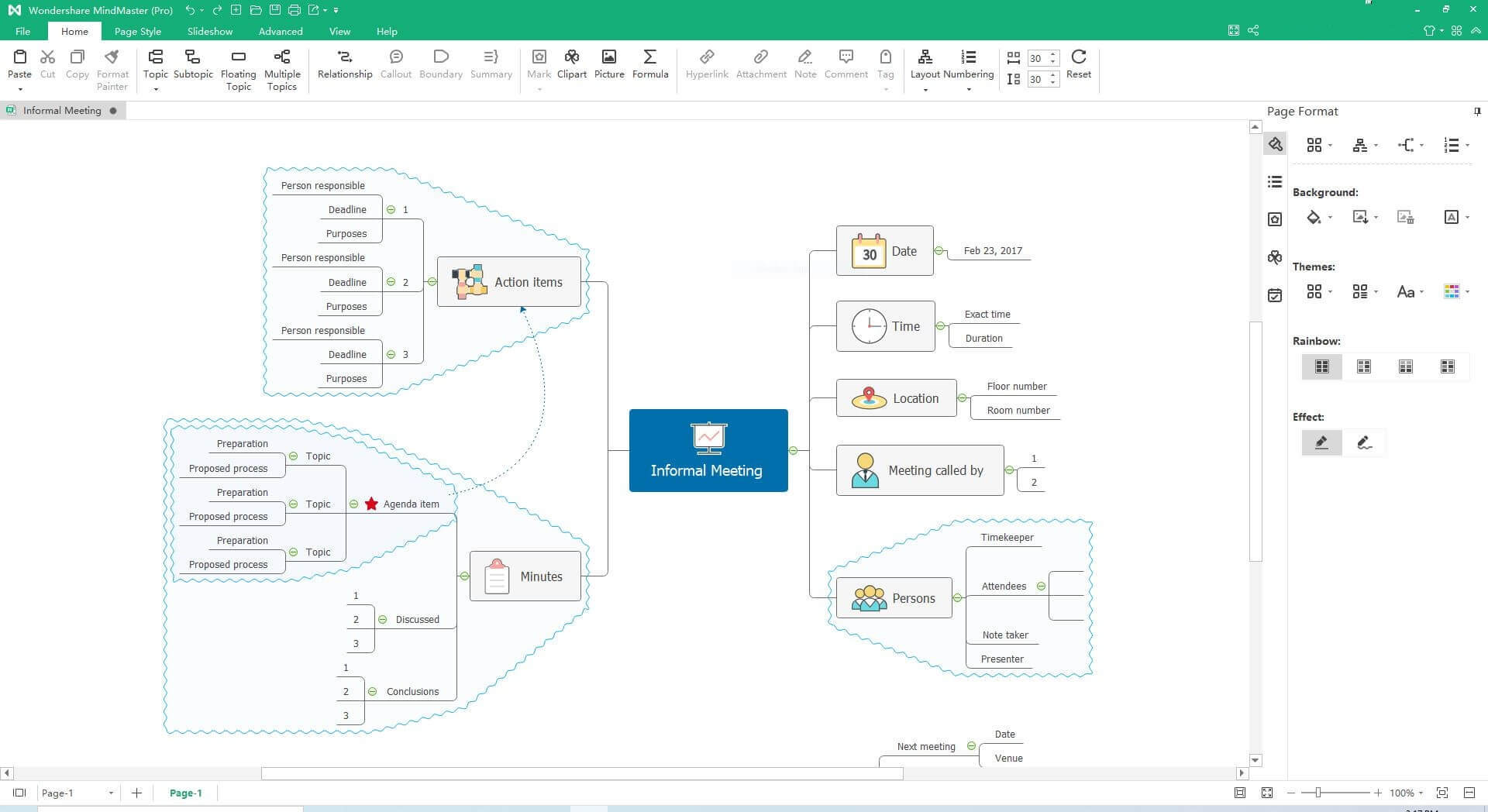
Mind mapping techniques are used everywhere for almost all purposes, and effective meeting management is not any different either. With mind mapping, you can cover all the points starting from brainstorming, setting a plan, and task assignment without much effort. This process becomes even simpler with MindMaster, a robust mind mapping software that can help you illustrate all the aspects of your meetings graphically, and track the progress and outcomes via Gantt charts that can be created with a single click. MindMaster even lets you prepare slideshows and presentations to present your ideas before your team members or clients.




